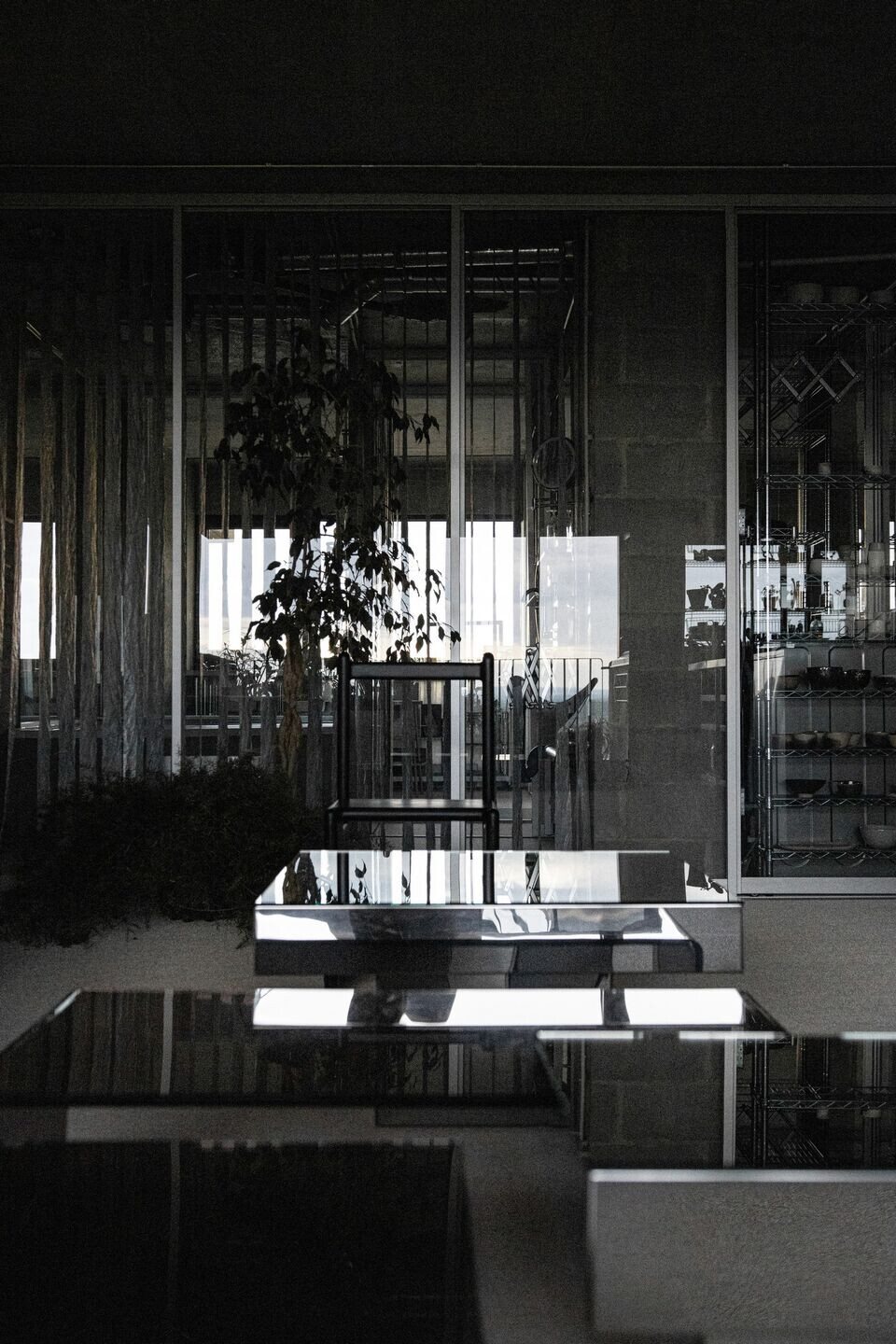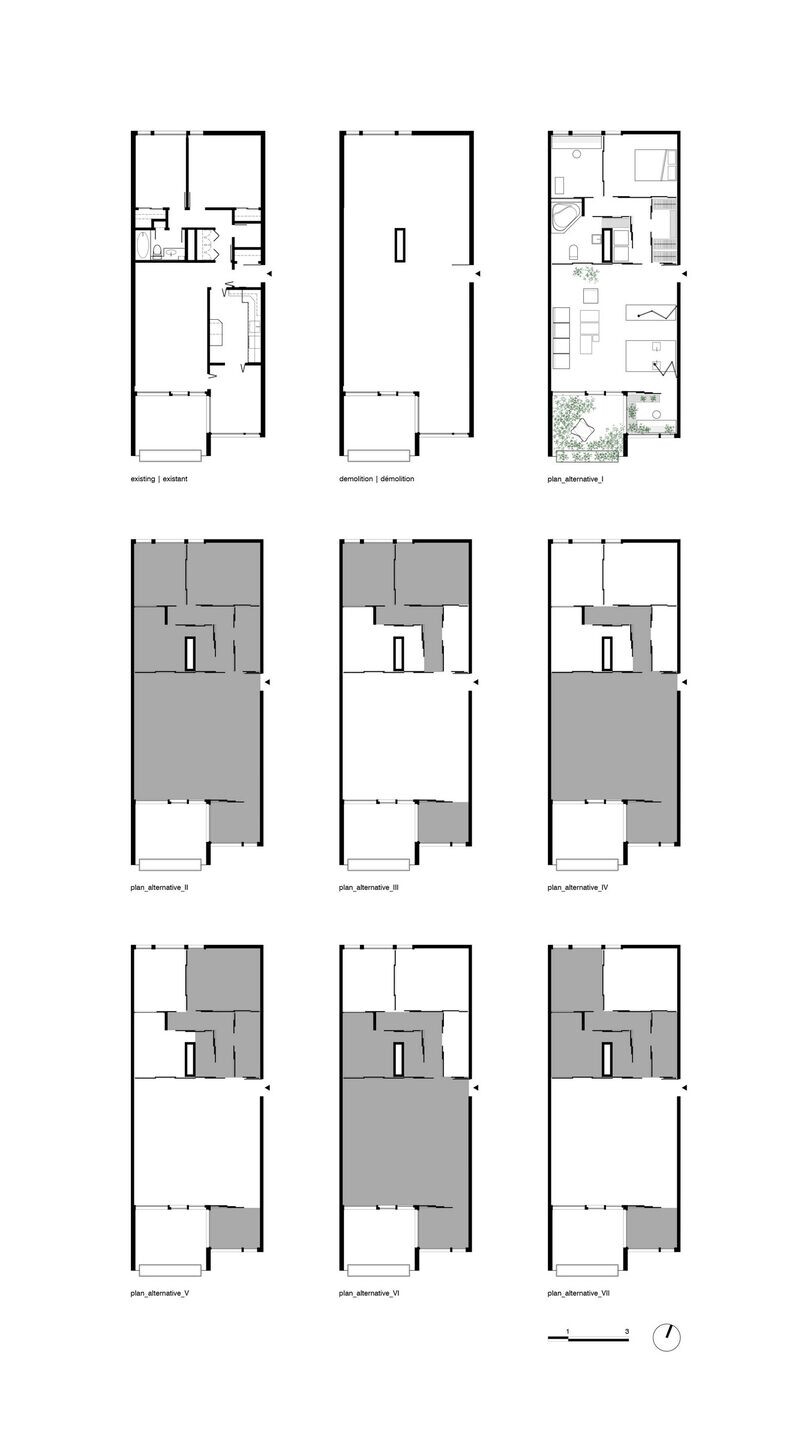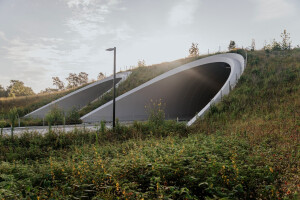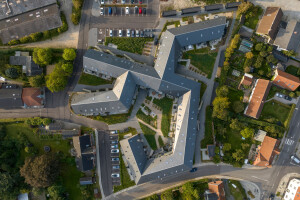Now dividing his time between practice and teaching at the School of Architecture of Laval University in Quebec City, architect Jean Verville, appealed by the brutalist architecture punctuating the national capital with significant buildings, established his creative laboratory in a residential tower, designed in the 1970's by architect Marcel Bilodeau, and standing out as a monumental sculpture facing the Plains of Abraham Park.
The rehabilitation of a compact 79m2 unit is deployed in an architectural experiment orchestrating a space with a graphic dimension. Like an observation post offering breathtaking views of the Laurentian Mountains, the urban landscape, and the St Lawrence River, the interior comes alive with an immutable body-to-body relationship between transparency and reflection, while transforming realities through distancing and multiplication.


First, a complete curettage prescribed by a necessary upgrading. Thus, freed from all construction systems and obsolete equipment, the unit reveals a monolith of raw concrete, pierced with openings to the north and south. Taking advantage of the crossing typology, the mineral materiality, the natural luminosity, and the electromechanical systems essential to the functioning of the habitable space, an architectural device, formed of a serial composition of sliding glass walls, allows fluid reconfigurations, while thwarting perceptions of size. The strategic positioning of domestic equipment maintains constant physical and visual permeability to neutralize the compactness of the unit.
The modular spatial organization system divides the volumetric entity by structuring mobile boundaries associated with the interchangeability of equipment in order to meet the requirements of organizational and functional adaptability, while maintaining visual porosity. By addition or subtraction, this flexible system fragments the plan into 6 layout alternatives with undetermined functions, offering up to 7 distinct sub-spaces, while flexible blinds with a metallic finish allow the option of openwork borders, as well as total privacy.


The project is based on a reasoned use of materials and components with the aim of limiting resources, types of interventions, and costs. In order to reduce the carbon footprint relating to energy consumption for heating and air conditioning, the proposal uses the thermal inertia of the concrete shell, absorbing both heat of the winter solar radiation and summer night coolness, and then redistributes them gently. While the transversality of the unit and the modular sliding wall system allow a multitude of combinations, they also promote natural ventilation optimizing comfort in summer.
Interacting with reflective, transparent, and metallic surfaces, the multiple reverberations of light create kinetic lighting animating the entire space with plays of light and shadow. Industrial elements, such as unloading dock lamps or commercial restaurant furniture, come together in an eclectic ensemble evoking the alchemist's laboratory, transforming reality into fiction. Glass vials of all kinds, models and various explorations, utilitarian objects, and plants rub shoulders on the shelves, revisiting the spirit of the cabinet of curiosities in a playful presentation of everyday life.


Team:
Architect: Studio Jean Verville architectes
Client: Jean Verville
Studio Jean Verville architectes team
Jean Verville, architect - lead designer Gabriel Ladouceur, studio coordinator, professional and scientific MA architecture candidate - Guillaume Turgeon Solis, technical specialist France Goneau, artistic advisor Tania Paula Garza Rico, architect
Art furniture: Loïc Bard
Ceramic sculptures: France Goneau
Photography: Maryse Béland, Maxime Brouillet, Antoine Michel
Vidéo: Antoine Michel, ISO Studio
Contractor: Nomad construction (Quebec City)
























































